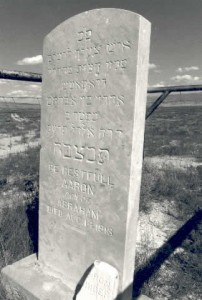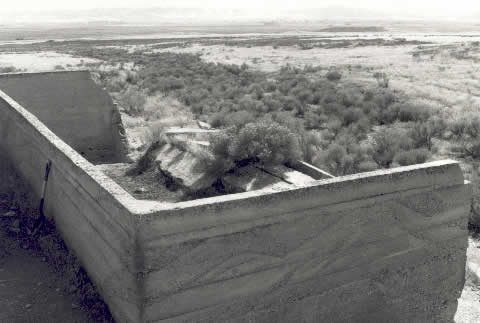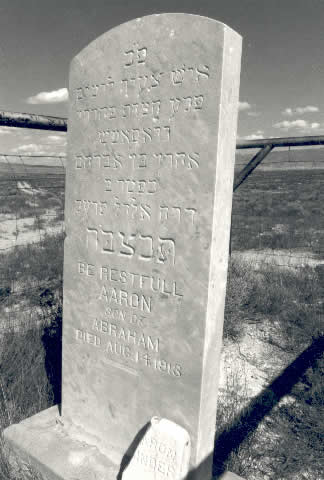In the early 1900s, a small, international back-to-the-soil movement of Jews affected a remote area in central Utah, and Clarion came into being. The Zionist movement was creating small communities in Israel where Jews could return and live. The idea spread and 40 such colonies were created in the United States of America, while a handful of others were founded in Canada and Argentina.
 Utah Governor Spry encouraged Jews to come to Utah and participate in the venture to settle Clarion and to create their own community. One hundred fifty people, from both New York City and Philadelphia answered the call. These were mostly people from East Coast ghettos who were seeking a return to their roots and a better way of life. Backed by several wealthy Salt Lake City Jews, as well as others, the project purchased 6,000 acres in central Utah and $150,000 bond was underwritten for the participants.
Utah Governor Spry encouraged Jews to come to Utah and participate in the venture to settle Clarion and to create their own community. One hundred fifty people, from both New York City and Philadelphia answered the call. These were mostly people from East Coast ghettos who were seeking a return to their roots and a better way of life. Backed by several wealthy Salt Lake City Jews, as well as others, the project purchased 6,000 acres in central Utah and $150,000 bond was underwritten for the participants.
Of the 150 Jews to come to Clarion, only one listed his occupation as “farmer.” All these Jews were of Russian or Polish descent and were between 20 and 30 years of age. Most of them had been in the United States fewer than five years. They had almost no experience in farming or with the trials they went through. They sacrificed a great deal for the prospect of something better.
A small advance party consisting of just 12 members arrived in the fall of 1911, headed by Benjamin Brown. They cleared land, plowed, and began to plant. They succeeded in cultivating 1,500 acres that year. The next year the settlement’s population had grown to 23 families. After the colony’s first harvest, Governor Spry travelled there to speak at the celebration attended by more than 1,000 people.
The hopes of the settlers were high. They felt that if they were willing to work hard enough, they could accomplish anything. However, irrigation farming proved extremely difficult for the inexperienced settlers and the water supply was unreliable. the first year’s crop was not big enough for the settlers to make their loan payment. Despite the situation getting worse, people continued to arrive.
To sustain the colony, the settlers had to depend on the good will of others. People continued to invest and try and aid the settlers, but after four years, Clarion was still not even breaking even. In the late fall of 1915, the State Land Board foreclosed on the land, and the majority of Clarion residents had to leave. A combination of factors, including lack of success with irrigation, an early frost, broken equipment, bad weather, financial troubles, and poor soil yielding poor crops contributed to Clarion’s failure. Many of the settlers left in frustration and despair.
Upon leaving Utah, the settlers went myriad ways; many returned to New York and Philadelphia, some left to farm in California, Michigan, and Pennsylvania, a few even stayed in Utah. By 1920, however, even those who stayed behind originally felt compelled to leave. Some documents suggest that they were afraid their children would marry outside of their faith, due to the lack of a Jewish population.
One historian, Robert A. Goldberg, said of the experiment: “Clarion died an early death. The site chosen was characterized by marginal soil and an undependable water system. Moreover, the colonists’ knowledge of farming as well as their funds were inadequate to sustain their effort. Yet, they had looked beyond personal self-interest and fought for a Jewish rebirth on the land and an end to bigotry. That they failed is their history; that they dreamed and struggled and were greater than themselves is their legacy.”
The failure of this Jewish community to succeed is even more understandable when one learns that even today much of the land they were attempting to farm has been found unsuitable for irrigation. Only about half of the original 6,000 acres are farmed today.
 A particular event captures perfectly the whole experience. A large cistern was built early on, whose purpose it was to filter and store culinary water. The first time the cistern was filled, however, it collapsed. Later inspection shows it had inadequate internal support because there was no re-bar in the concrete.
A particular event captures perfectly the whole experience. A large cistern was built early on, whose purpose it was to filter and store culinary water. The first time the cistern was filled, however, it collapsed. Later inspection shows it had inadequate internal support because there was no re-bar in the concrete.
A small group of Scandinavian Mormons moved into the area after the Jews left, but they disbanded in 1934 due to lack of water. The Jews who attempted to settle Clarion certainly did not lack will or effort, though they did lack experience. However, there was just simply not enough water to make the area viable for farming.
The remains of the cistern and a few gravestones written on in both English and Hebrew are all that remain of Clarion today, except the legacy these brave Jews leave of determination and hope.
References:
“A Short History of Clarion” by Roger D. Hansen; http://www.waterhistory.org/histories/clarion/
“Remnants of Jewish immigrant colony in Utah show experiment gone awry” by Jessica Ravitz; http://www.sltrib.com/Faith/ci_11095676


 Watch a video about the restoration of the gospel on lds.org
Watch a video about the restoration of the gospel on lds.org